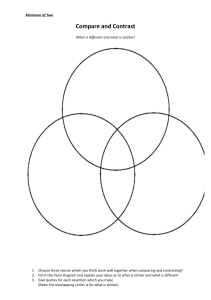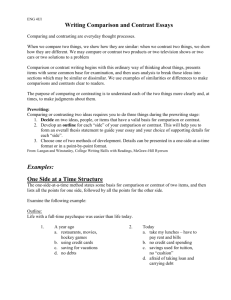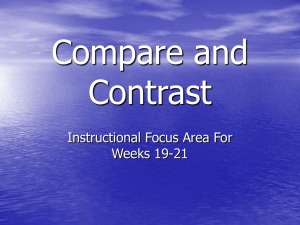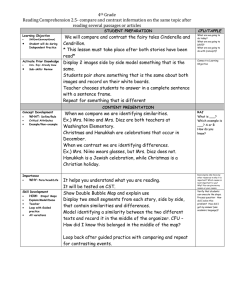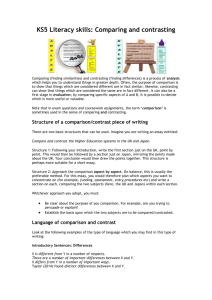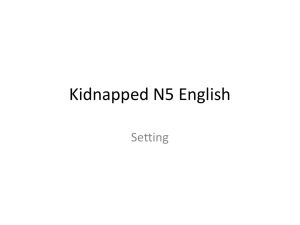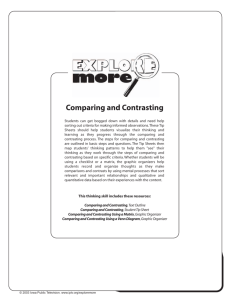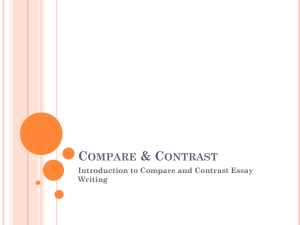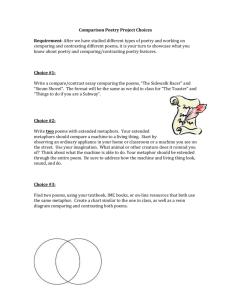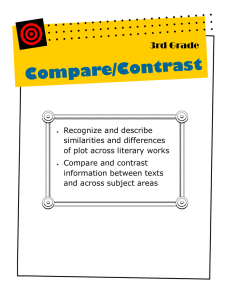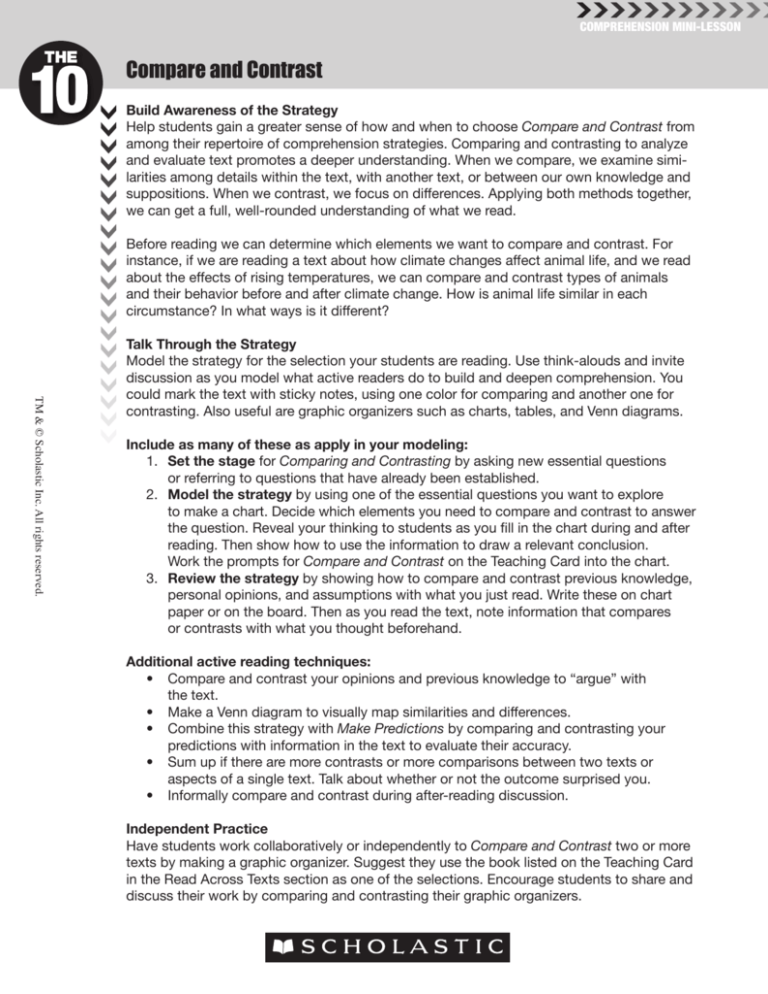
Comprehension mini-lesson
Compare and Contrast
Build Awareness of the Strategy
Help students gain a greater sense of how and when to choose Compare and Contrast from
among their repertoire of comprehension strategies. Comparing and contrasting to analyze
and evaluate text promotes a deeper understanding. When we compare, we examine similarities among details within the text, with another text, or between our own knowledge and
suppositions. When we contrast, we focus on differences. Applying both methods together,
we can get a full, well-rounded understanding of what we read.
Before reading we can determine which elements we want to compare and contrast. For
instance, if we are reading a text about how climate changes affect animal life, and we read
about the effects of rising temperatures, we can compare and contrast types of animals
and their behavior before and after climate change. How is animal life similar in each
circumstance? In what ways is it different?
TM & © Scholastic Inc. All rights reserved.
Talk Through the Strategy
Model the strategy for the selection your students are reading. Use think-alouds and invite
discussion as you model what active readers do to build and deepen comprehension. You
could mark the text with sticky notes, using one color for comparing and another one for
contrasting. Also useful are graphic organizers such as charts, tables, and Venn diagrams.
Include as many of these as apply in your modeling:
1. Set the stage for Comparing and Contrasting by asking new essential questions
or referring to questions that have already been established.
2. Model the strategy by using one of the essential questions you want to explore
to make a chart. Decide which elements you need to compare and contrast to answer the question. Reveal your thinking to students as you fill in the chart during and after reading. Then show how to use the information to draw a relevant conclusion.
Work the prompts for Compare and Contrast on the Teaching Card into the chart.
3. Review the strategy by showing how to compare and contrast previous knowledge, personal opinions, and assumptions with what you just read. Write these on chart paper or on the board. Then as you read the text, note information that compares
or contrasts with what you thought beforehand.
Additional active reading techniques:
• Compare and contrast your opinions and previous knowledge to “argue” with
the text.
• Make a Venn diagram to visually map similarities and differences.
• Combine this strategy with Make Predictions by comparing and contrasting your
predictions with information in the text to evaluate their accuracy.
• Sum up if there are more contrasts or more comparisons between two texts or
aspects of a single text. Talk about whether or not the outcome surprised you.
• Informally compare and contrast during after-reading discussion.
Independent Practice
Have students work collaboratively or independently to Compare and Contrast two or more
texts by making a graphic organizer. Suggest they use the book listed on the Teaching Card
in the Read Across Texts section as one of the selections. Encourage students to share and
discuss their work by comparing and contrasting their graphic organizers.

